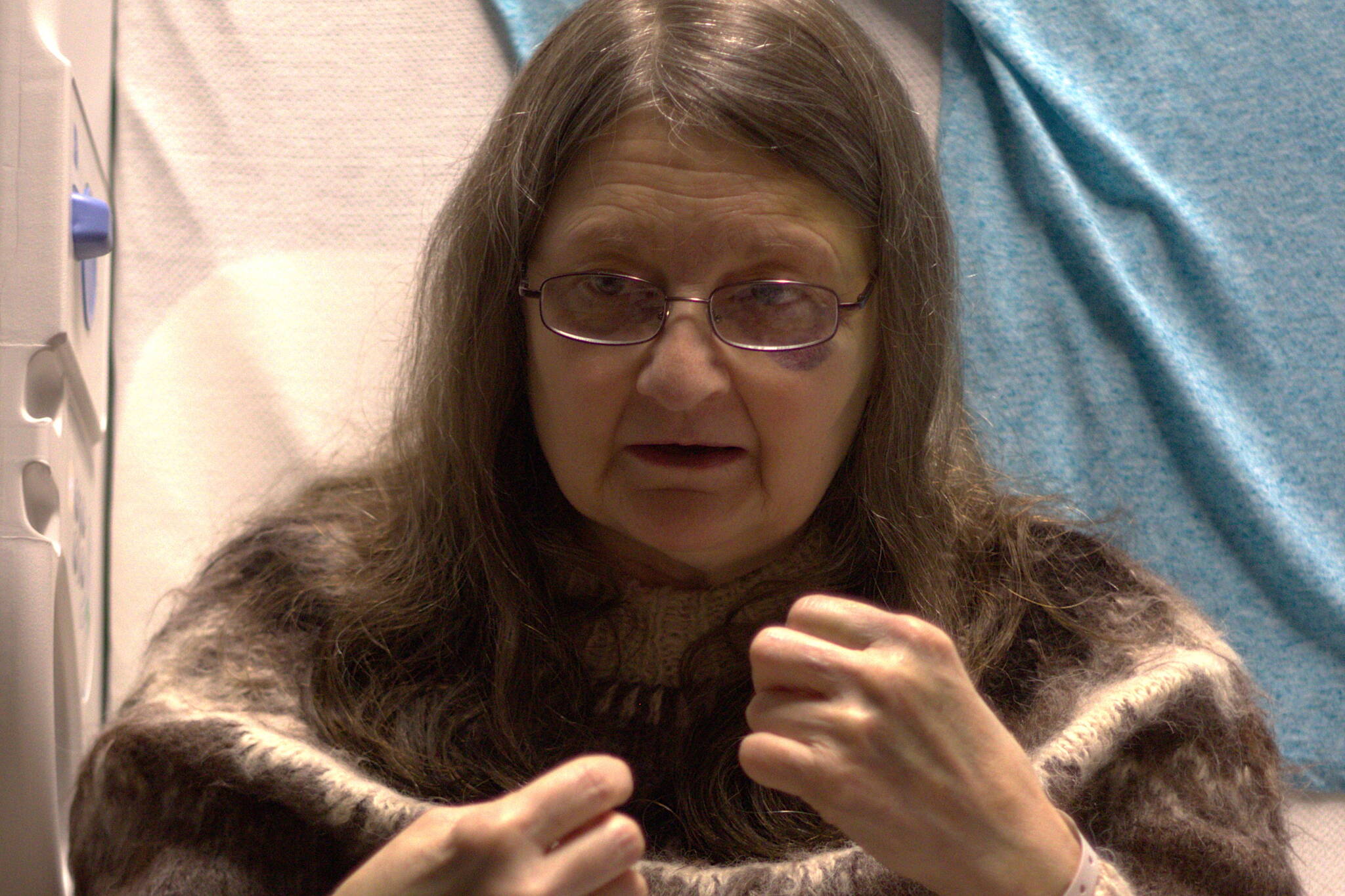Christina Florschutz, an aide at Evergreen Elementary School, survived the Wrangell landslide that killed at least four people Nov. 20 — even after debris destroyed her home and trapped her overnight.
The evening of the slide, Florschutz went upstairs to take a shower. After she got out, she heard “a horrible noise, a very loud noise.”
Before she could react, the landslide slammed into her house, tossing her “like a piece of weightless popcorn” around the room until she lost consciousness.
When she woke up, she was trapped between the roof of her house and a pile of debris. It was dark, rain was falling, and she had no idea how big the slide was or whether anyone in town knew about it yet.
“I was hanging kind of head down, at an angle, with my feet up,” she recalled in an interview from her hospital bed four days later. “It was fairly uncomfortable.” She had sustained a few injuries and her heart was pounding.
She felt around in the darkness and found a plastic bag full of pieces of polar fleece yardage from her upstairs sewing room. “Right then and there, I knew I was going to live,” she said. “I was going to live. I was meant to live.”
She pulled the fleece over herself and waited for morning. “I had awful leg cramps,” she said. “I was screaming with the leg cramps at times.”
Sometime after dawn, she unstuck herself and walked toward the back corner of the house. “The house had slid down mostly intact,” she recalled. “And then it slammed into the old shop and the bedroom … shot off and continued farther. They found pieces of it in the water.”
Surveying the wreckage, she was shocked by the size of the slide and wondered if other homes had been hit. “I thought, ‘Wow, I hope Wrangell is still around.’” As she continued to look through the debris, she found a bag of women’s large pajama bottoms, which she had bought at the thrift store to use for sewing projects.
“They’re really good quality for fleece,” she said, though “I shouldn’t be telling my secrets.”
She used the pajama bottoms to cover her legs, arms and head. Then, she started off across the debris field until she got to its edge, which was piled high with trees.
“I see hats going through the trees,” she said. “Baseball caps. And I thought, ‘people!’”
She doesn’t remember exactly who found her first, but eventually a group of six or seven people put her in a sled and dragged her across the rubble, she recalled.
She spent the rest of the week recovering at Wrangell Medical Center, receiving calls from friends. Once she’s released, she’s looking forward to greeting the third graders she works with. “When they heard that I was actually alive, they got a little rowdy,” she said.
Florschutz believes that the circumstances of her survival are a miracle and is grateful to the community for their support. Being in Alaska forces you to “learn to live with others and help each other,” she said. “It forces you to not try to be an island. … We can’t exist without each other. And the greatest treasure that we have here are the people.”

